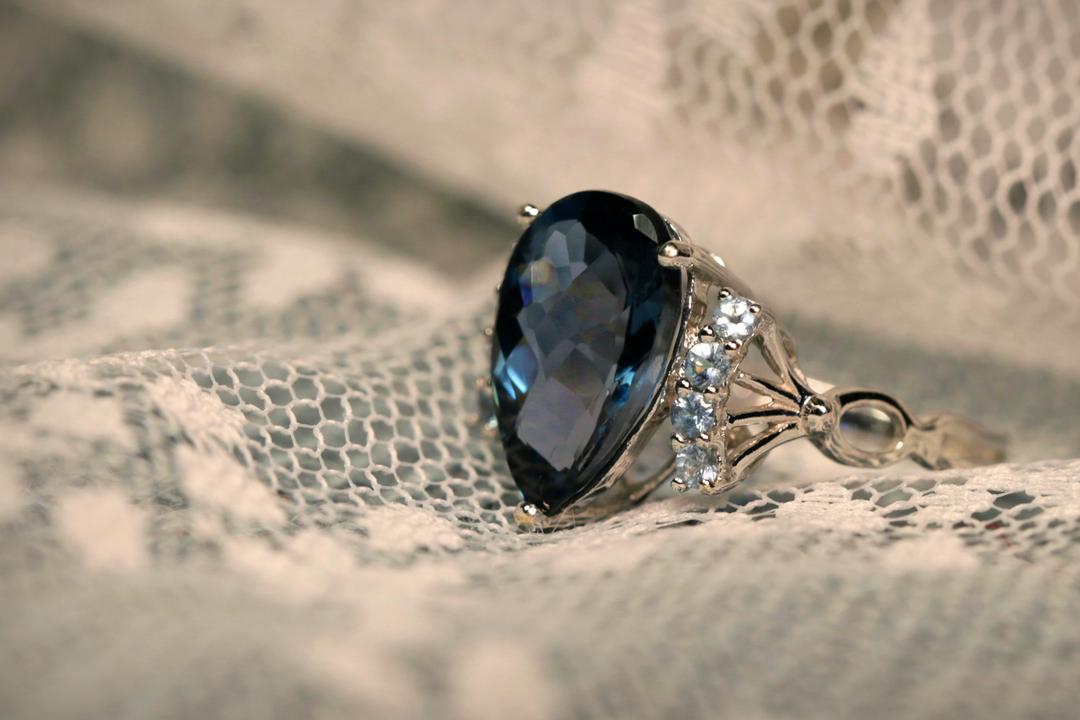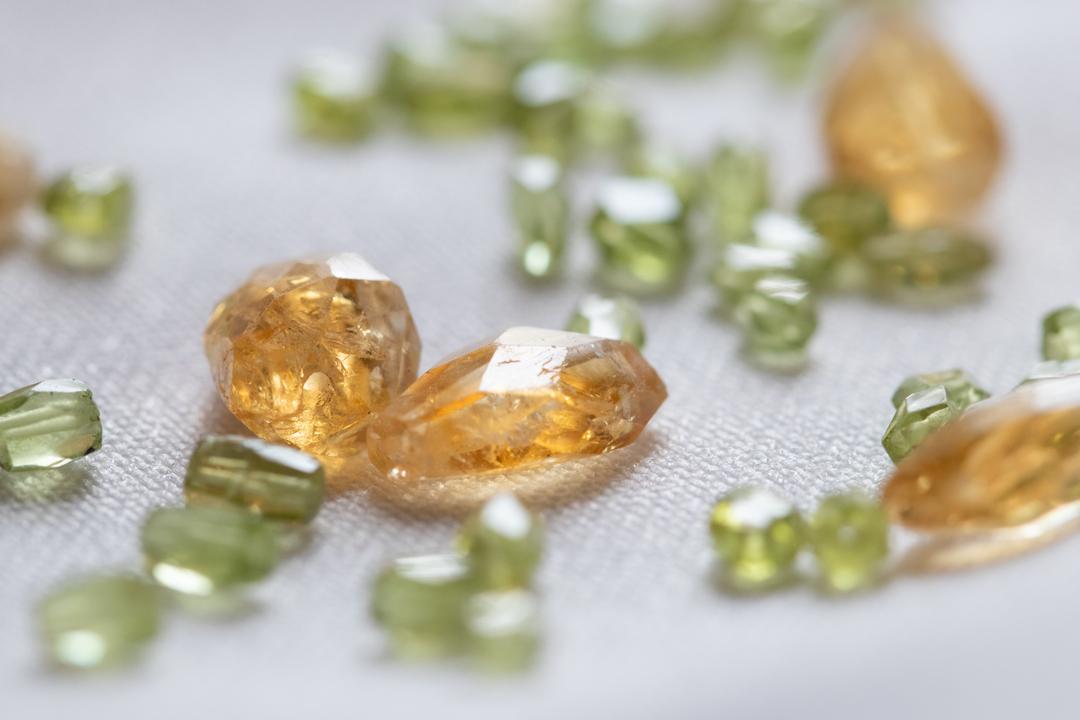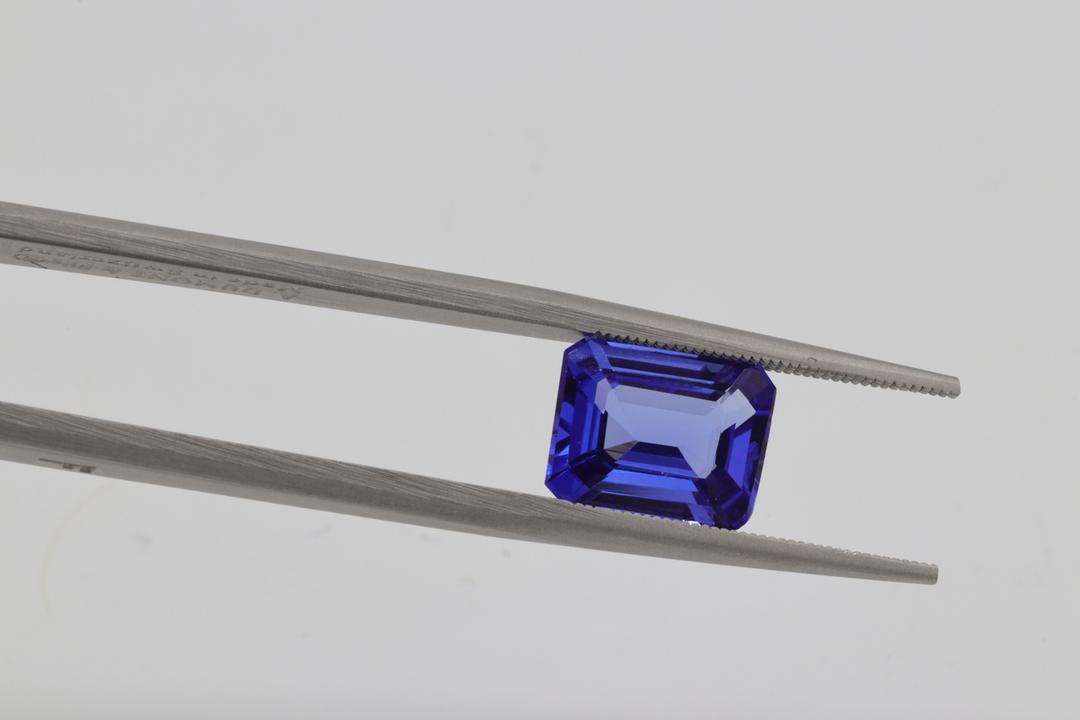November Birthstone Jewelry - Citrine and Topaz

November Birthstone Jewelry - Citrine and Topaz
The start of a new month gives us the perfect opportunity to start fresh, realign ourselves, and put our best foot forward before the coming of winter. Nothing represents that better than the bright and enchanting gems Citrine and Topaz, which carry with them a kind of warmth that is both compelling yet unobtrusive. These birthstones possess a very long and enchanting history and the November Birthstone Jewelry up to this day matches its prestige and embodies the true charm of our dear sweet November babies. Let's take a dive into both of these birthstones and at the jewelry that highly encompasses the very spirit of November.
Why are There Two November Birthstones?
Topaz was initially known for a long time to be the first and original birthstone of November. Some Topaz colors such as pink, yellow and blue topaz were immensely hard to find or exclusive only to royal families; the exceptional gemstone really was a rarity, not to mention very expensive. Jewelers in the early 20th century have decidedly presented the beautiful Citrine birthstone as an alternative and more affordable gemstone to combat Topaz’ rarity, and has been properly recognized as the second official gemstone of November since then. These two beautiful and unique gemstones are used widely today for November birthstone jewelry pieces.
Topaz was initially known for a long time to be the first and original birthstone of November. Some Topaz colors such as pink, yellow and blue topaz were immensely hard to find or exclusive only to royal families; the exceptional gemstone really was a rarity, not to mention very expensive. Jewelers in the early 20th century have decidedly presented the beautiful Citrine birthstone as an alternative and more affordable gemstone to combat Topaz’ rarity, and has been properly recognized as the second official gemstone of November since then. These two beautiful and unique gemstones are used widely today for November birthstone jewelry pieces.
November Birthstone Jewelry Colors
Citrine. Citrines, from the quartz family, possess warm colors that are just as vibrant as a ruby, sapphire, emerald. Displaying usually a bright yellow color, Citrines can also come in a variety of quartz ranging from a light yellow to a dark orange. Naturally occurring yellow citrines are very hard to find, and are the most prized by collectors and enthusiasts. Its yellow color is caused by the amount of iron present in the gem, and can oftentimes be artificially formed by jewelers by heat treatments on amethysts and quartz to give the stone its signature yellow tinge.
Topaz. Unlike citrine, topaz comes in a wide variety of colors. The most common one being a transparent color. Its hues depend on the “defects” or the impurities in its crystal structure rather than its chemical composition. These can sometimes come from changes specifically from the jewelry industry itself. Other than being colorless, the topaz also comes in shades of blue, yellow, pink, green, and orange, the most rare and expensive being an orange to pink color commonly known as the “imperial topaz”.
Citrine. Citrines, from the quartz family, possess warm colors that are just as vibrant as a ruby, sapphire, emerald. Displaying usually a bright yellow color, Citrines can also come in a variety of quartz ranging from a light yellow to a dark orange. Naturally occurring yellow citrines are very hard to find, and are the most prized by collectors and enthusiasts. Its yellow color is caused by the amount of iron present in the gem, and can oftentimes be artificially formed by jewelers by heat treatments on amethysts and quartz to give the stone its signature yellow tinge.
Topaz. Unlike citrine, topaz comes in a wide variety of colors. The most common one being a transparent color. Its hues depend on the “defects” or the impurities in its crystal structure rather than its chemical composition. These can sometimes come from changes specifically from the jewelry industry itself. Other than being colorless, the topaz also comes in shades of blue, yellow, pink, green, and orange, the most rare and expensive being an orange to pink color commonly known as the “imperial topaz”.
Citrine. Citrines, from the quartz family, possess warm colors that are just as vibrant as a ruby, sapphire, emerald. Displaying usually a bright yellow color, Citrines can also come in a variety of quartz ranging from a light yellow to a dark orange. Naturally occurring yellow citrines are very hard to find, and are the most prized by collectors and enthusiasts. Its yellow color is caused by the amount of iron present in the gem, and can oftentimes be artificially formed by jewelers by heat treatments on amethysts and quartz to give the stone its signature yellow tinge.
Topaz. Unlike citrine, topaz comes in a wide variety of colors. The most common one being a transparent color. Its hues depend on the “defects” or the impurities in its crystal structure rather than its chemical composition. These can sometimes come from changes specifically from the jewelry industry itself. Other than being colorless, the topaz also comes in shades of blue, yellow, pink, green, and orange, the most rare and expensive being an orange to pink color commonly known as the “imperial topaz”.
November Birthstone Jewelry Meaning
Citrine. Citrine's warm, bright and distinct color is popularly associated with ideas of optimism, emotional well being, and success. Commonly known as the “merchant’s stone”, citrines were used as ornaments throughout various points in history to not only attract good fortune, but also to brighten its wearer’s energy. Ancient Romans believed that citrine jewelry even had the power to protect its wearer from evil thoughts. Not much of these ideas associated with the sunny gemstone have changed, for even up to this day it is still very much known for its ability to cause emotional harmony and wishes for increased self-esteem.
Topaz. The topaz is a stone of nobility, love, and passion and is the truest expression of fire energy. It was prized for its ability to give its wearer an air of confidence and achieve excellence in their activities. Similar to the citrine, the topaz also is a protective stone that combats the wearer’s anxieties and insecurities and ultimately promotes mental clarity. In Hindu cosmology, the topaz and other precious gemstones possess symbolic values relating to their deities and are very much beneficial to its wearers. For the topaz in particular, it is believed that when worn as birthstone necklaces, it can promote long life, beauty, and intelligence.
Citrine. Citrine's warm, bright and distinct color is popularly associated with ideas of optimism, emotional well being, and success. Commonly known as the “merchant’s stone”, citrines were used as ornaments throughout various points in history to not only attract good fortune, but also to brighten its wearer’s energy. Ancient Romans believed that citrine jewelry even had the power to protect its wearer from evil thoughts. Not much of these ideas associated with the sunny gemstone have changed, for even up to this day it is still very much known for its ability to cause emotional harmony and wishes for increased self-esteem.
Topaz. The topaz is a stone of nobility, love, and passion and is the truest expression of fire energy. It was prized for its ability to give its wearer an air of confidence and achieve excellence in their activities. Similar to the citrine, the topaz also is a protective stone that combats the wearer’s anxieties and insecurities and ultimately promotes mental clarity. In Hindu cosmology, the topaz and other precious gemstones possess symbolic values relating to their deities and are very much beneficial to its wearers. For the topaz in particular, it is believed that when worn as birthstone necklaces, it can promote long life, beauty, and intelligence.
November Birthstone Jewelry History
Citrine. Long before its recognition as a November birthstone, this semi-precious gemstone was adored by numerous civilizations and consists of a history as vibrant as the gemstone itself. Ancient Egyptians often used citrines as talismans as they believed that it had the power to manifest desires, and its popularity as ornaments flourished just as much during the Hellenistic Age in Ancient Greece, its influence during that era even reaching as far as Ancient Rome.
Its rapport continued on to the 17th century as weapon makers made dagger handles entirely out of citrine and incorporated the gemstone into these weapons as decoration. Queen Victoria herself even made use of citrines in her summer residence which naturally caused a surge in demand. In 1912, mineralogists discovered that heat treated amethysts helped produce a yellow color. This turned int the November birthstone that we now recognize as citrine. Citrine’s popularity resurfaced once again during the Art Deco movement and was used in select designs for November birthstone jewelry. Its bright and sunny color pairs well with the growth of gold jewelry such as necklaces and bracelets.
Topaz. The etymology of the word topaz is said to have stemmed from the Greek word topazos, or the Sanskrit word tapas meaning “fire”. Ancient Egyptians believed that the Ra, the Sun God, was the reason for its yellow hues, and thus possessed magical properties that protected and aided its wearers in health.
The surge in popularity for the topaz didn’t come until the 1800s, when Portugal began exploiting the mineral resources in Brazil. Because topazes are commonly colorless, they were often mistaken for being diamonds. Regardless of this misunderstanding, not only did topaz become quite the alternative for diamond jewelry, but it still became a symbol of wealth and nobility. The Art Deco and other modern art movements contributes to the decrease in popularity for the gemstone and has not quite been as in demand as it used to be, but there is no denying the sheer beauty and charm the gemstone possesses up to this day.
Citrine. Long before its recognition as a November birthstone, this semi-precious gemstone was adored by numerous civilizations and consists of a history as vibrant as the gemstone itself. Ancient Egyptians often used citrines as talismans as they believed that it had the power to manifest desires, and its popularity as ornaments flourished just as much during the Hellenistic Age in Ancient Greece, its influence during that era even reaching as far as Ancient Rome.
Its rapport continued on to the 17th century as weapon makers made dagger handles entirely out of citrine and incorporated the gemstone into these weapons as decoration. Queen Victoria herself even made use of citrines in her summer residence which naturally caused a surge in demand. In 1912, mineralogists discovered that heat treated amethysts helped produce a yellow color. This turned int the November birthstone that we now recognize as citrine. Citrine’s popularity resurfaced once again during the Art Deco movement and was used in select designs for November birthstone jewelry. Its bright and sunny color pairs well with the growth of gold jewelry such as necklaces and bracelets.
Topaz. The etymology of the word topaz is said to have stemmed from the Greek word topazos, or the Sanskrit word tapas meaning “fire”. Ancient Egyptians believed that the Ra, the Sun God, was the reason for its yellow hues, and thus possessed magical properties that protected and aided its wearers in health.
The surge in popularity for the topaz didn’t come until the 1800s, when Portugal began exploiting the mineral resources in Brazil. Because topazes are commonly colorless, they were often mistaken for being diamonds. Regardless of this misunderstanding, not only did topaz become quite the alternative for diamond jewelry, but it still became a symbol of wealth and nobility. The Art Deco and other modern art movements contributes to the decrease in popularity for the gemstone and has not quite been as in demand as it used to be, but there is no denying the sheer beauty and charm the gemstone possesses up to this day.
Citrine. Long before its recognition as a November birthstone, this semi-precious gemstone was adored by numerous civilizations and consists of a history as vibrant as the gemstone itself. Ancient Egyptians often used citrines as talismans as they believed that it had the power to manifest desires, and its popularity as ornaments flourished just as much during the Hellenistic Age in Ancient Greece, its influence during that era even reaching as far as Ancient Rome.
Its rapport continued on to the 17th century as weapon makers made dagger handles entirely out of citrine and incorporated the gemstone into these weapons as decoration. Queen Victoria herself even made use of citrines in her summer residence which naturally caused a surge in demand. In 1912, mineralogists discovered that heat treated amethysts helped produce a yellow color. This turned int the November birthstone that we now recognize as citrine. Citrine’s popularity resurfaced once again during the Art Deco movement and was used in select designs for November birthstone jewelry. Its bright and sunny color pairs well with the growth of gold jewelry such as necklaces and bracelets.
Topaz. The etymology of the word topaz is said to have stemmed from the Greek word topazos, or the Sanskrit word tapas meaning “fire”. Ancient Egyptians believed that the Ra, the Sun God, was the reason for its yellow hues, and thus possessed magical properties that protected and aided its wearers in health.
The surge in popularity for the topaz didn’t come until the 1800s, when Portugal began exploiting the mineral resources in Brazil. Because topazes are commonly colorless, they were often mistaken for being diamonds. Regardless of this misunderstanding, not only did topaz become quite the alternative for diamond jewelry, but it still became a symbol of wealth and nobility. The Art Deco and other modern art movements contributes to the decrease in popularity for the gemstone and has not quite been as in demand as it used to be, but there is no denying the sheer beauty and charm the gemstone possesses up to this day.



























